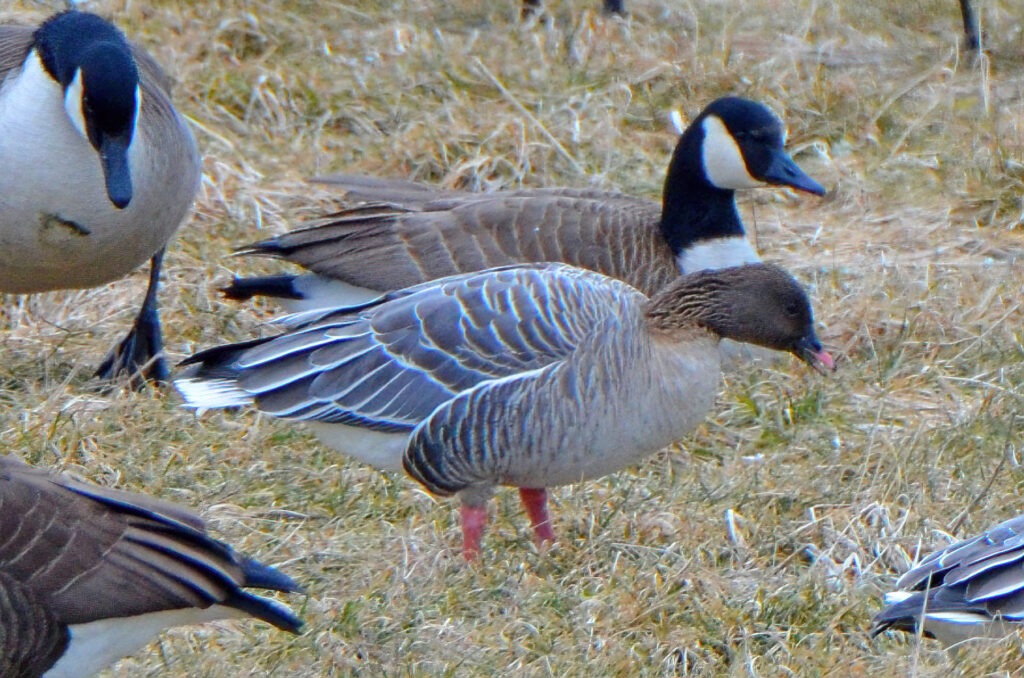
The Pink-footed Goose (Anser brachyrhynchus) is a medium-sized species of goose with a distinctive appearance. Adults have a length of 24-30 inches (61-76 cm) and a weight of 2.6-4.4 lbs (1.2-2 kg). They have a dark grey-brown plumage with a pink bill, legs and feet, which gives them their name. Another characteristic feature is the narrow white band on the neck.

Pink-footed Geese are migratory birds that breed in Iceland and Greenland, and winter in the UK, the Netherlands, Belgium, and Denmark. They travel long distances, covering up to 1,200 miles (1,930 km) in just a few days. During their migration, they form large flocks, often numbering in the thousands. They can be seen flying in a V-shaped formation, with the lead bird at the front and the others following in a line behind.
These geese prefer to feed on the leaves, stems, and roots of grasses, sedges, and herbs. They are also known to eat grains and small invertebrates, such as snails and insects. During the winter months, they feed in wetland areas and fields, often alongside other species of geese.
The Pink-footed Goose is a highly social species, and during the breeding season, they form monogamous pairs that stay together for life. They typically breed in colonies on coastal wetlands, where they build their nests out of plant material. The female lays a clutch of 4-6 eggs, which she incubates for about 25-27 days.

Unfortunately, the Pink-footed Goose is classified as a near-threatened species, with a population estimated at around 350,000 individuals. Threats to their survival include habitat loss, hunting, and climate change. Conservation efforts are underway in many areas to protect these geese and their breeding and wintering habitats.

